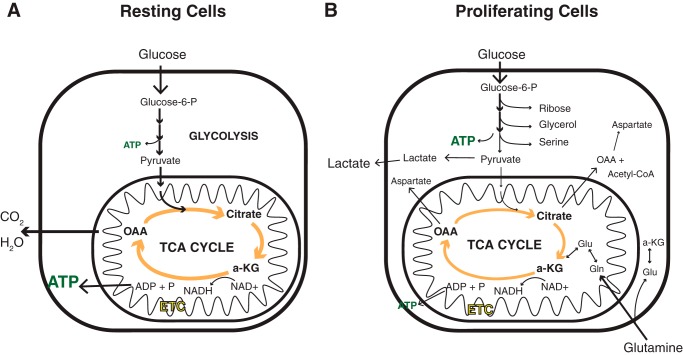Figure 1.
The fate of nutrients taken up is different between resting and proliferating cells. A, in resting cells, the primary bioenergetic substrate taken up by the cell is glucose. Through combined activities of glycolysis and oxidative phosphorylation, glucose is oxidized to carbon dioxide (CO2) and water (H2O), converting ADP to ATP primarily through the electrochemical potential created by the electron transport chain (ETC) in the inner mitochondrial membrane. B, in proliferating cells, more glucose is taken up than the cells can utilize for either ATP production or macromolecular synthesis. Carbon in excess of those needs is secreted as lactate. Depletion of TCA cycle intermediates is prevented by increases in the uptake of amino acids, primarily glutamine.

